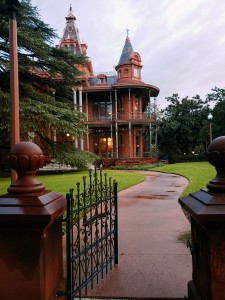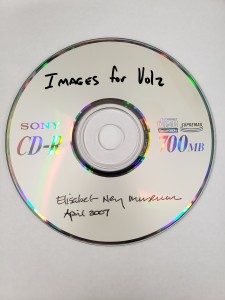
Hello! My name is Abbie Norris, and I am the current digital archives Graduate Research Assistant at the Alexander Architectural Archives. My primary job is processing the born-digital content received in the Volz & Associates, Inc. collection. This collection contains the records of the Volz & Associates, Inc. architecture firm, which is focused primarily on preserving and restoring historic buildings and interiors. The collection showcases notable buildings from Texas and United States history and is an excellent resource to discover how much is needed to keep historic buildings authentic and alive.

The Volz Collection is significant to the Alexander for several reasons, but most importantly, it is the archive’s first large-scale born-digital accession. In addition to analog records and building materials, the collection includes roughly 450 floppy disks, 250 CDs, 90 zip disks, and one lone flash drive. These materials document the life of the firm from the early 1980s to the mid 2010s. So far, we have imaged over 100 filetypes representing everything from office files to construction reports to historic photographs. It’s a diverse array, and as the project moves forward, we’re faced with many questions about how best to provide access to researchers.
As diverse as the filetypes are the kinds of buildings included in the collection – though many are tied by one important identity. Volz worked on buildings of many functions, styles, and preservation needs. While these buildings span the United States, the majority of them are located in Texas. Included are the Governor’s Mansion, the Alamo, the Lyndon B. Johnson Ranch, and the Alexander’s own Battle Hall. I love working with this visual representation of Texas history. Whether it’s by noticing design similarities between county courthouses or the way historic landmarks are used and maintained, the collection is an in-depth look into how architecture shapes our state and its identity.

In my four months of working with this collection, I’ve learned an incredible amount about both the intricacies of born-digital archiving and the breadth of work architects do. Through the frustration of software bugs and the triumph of imaging previously unreadable disks, this is a fascinating collection that provides many learning opportunities.
The next steps of the project are to finalize the creation of a finding aid for these born-digital materials and to determine methods of access once the collection is published. Check back here soon for collection updates and an in-depth look at the world of born-digital archiving at the Alexander Architectural Archives!
